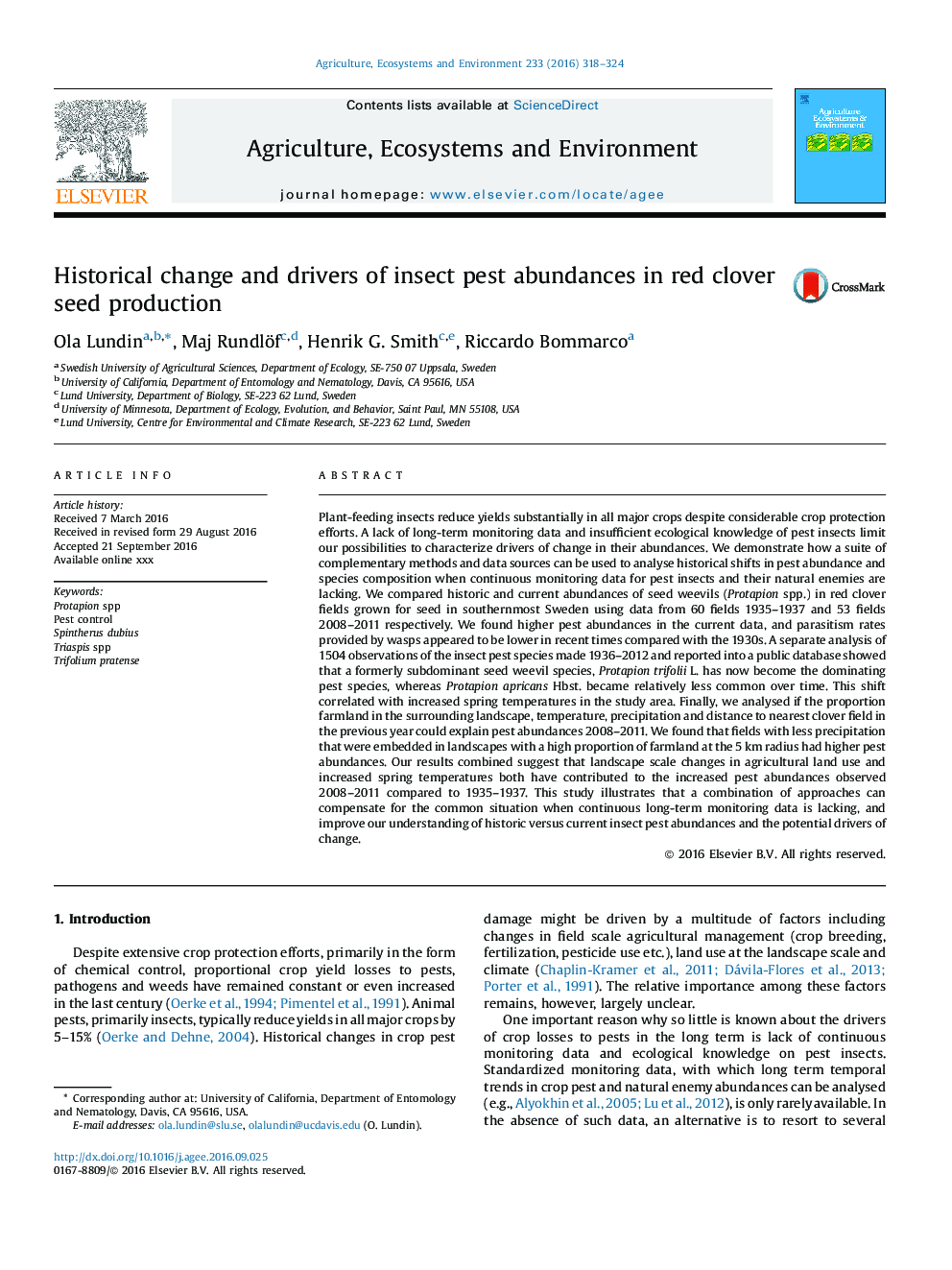| کد مقاله | کد نشریه | سال انتشار | مقاله انگلیسی | نسخه تمام متن |
|---|---|---|---|---|
| 8487285 | 1552019 | 2016 | 7 صفحه PDF | دانلود رایگان |
عنوان انگلیسی مقاله ISI
Historical change and drivers of insect pest abundances in red clover seed production
ترجمه فارسی عنوان
تغییر تاریخی و رانندگان فراوانی آفات حشرات در تولید دانه های شبدر قرمز
دانلود مقاله + سفارش ترجمه
دانلود مقاله ISI انگلیسی
رایگان برای ایرانیان
کلمات کلیدی
موضوعات مرتبط
علوم زیستی و بیوفناوری
علوم کشاورزی و بیولوژیک
علوم زراعت و اصلاح نباتات
چکیده انگلیسی
Plant-feeding insects reduce yields substantially in all major crops despite considerable crop protection efforts. A lack of long-term monitoring data and insufficient ecological knowledge of pest insects limit our possibilities to characterize drivers of change in their abundances. We demonstrate how a suite of complementary methods and data sources can be used to analyse historical shifts in pest abundance and species composition when continuous monitoring data for pest insects and their natural enemies are lacking. We compared historic and current abundances of seed weevils (Protapion spp.) in red clover fields grown for seed in southernmost Sweden using data from 60 fields 1935-1937 and 53 fields 2008-2011 respectively. We found higher pest abundances in the current data, and parasitism rates provided by wasps appeared to be lower in recent times compared with the 1930s. A separate analysis of 1504 observations of the insect pest species made 1936-2012 and reported into a public database showed that a formerly subdominant seed weevil species, Protapion trifolii L. has now become the dominating pest species, whereas Protapion apricans Hbst. became relatively less common over time. This shift correlated with increased spring temperatures in the study area. Finally, we analysed if the proportion farmland in the surrounding landscape, temperature, precipitation and distance to nearest clover field in the previous year could explain pest abundances 2008-2011. We found that fields with less precipitation that were embedded in landscapes with a high proportion of farmland at the 5Â km radius had higher pest abundances. Our results combined suggest that landscape scale changes in agricultural land use and increased spring temperatures both have contributed to the increased pest abundances observed 2008-2011 compared to 1935-1937. This study illustrates that a combination of approaches can compensate for the common situation when continuous long-term monitoring data is lacking, and improve our understanding of historic versus current insect pest abundances and the potential drivers of change.
ناشر
Database: Elsevier - ScienceDirect (ساینس دایرکت)
Journal: Agriculture, Ecosystems & Environment - Volume 233, 3 October 2016, Pages 318-324
Journal: Agriculture, Ecosystems & Environment - Volume 233, 3 October 2016, Pages 318-324
نویسندگان
Ola Lundin, Maj Rundlöf, Henrik G. Smith, Riccardo Bommarco,
